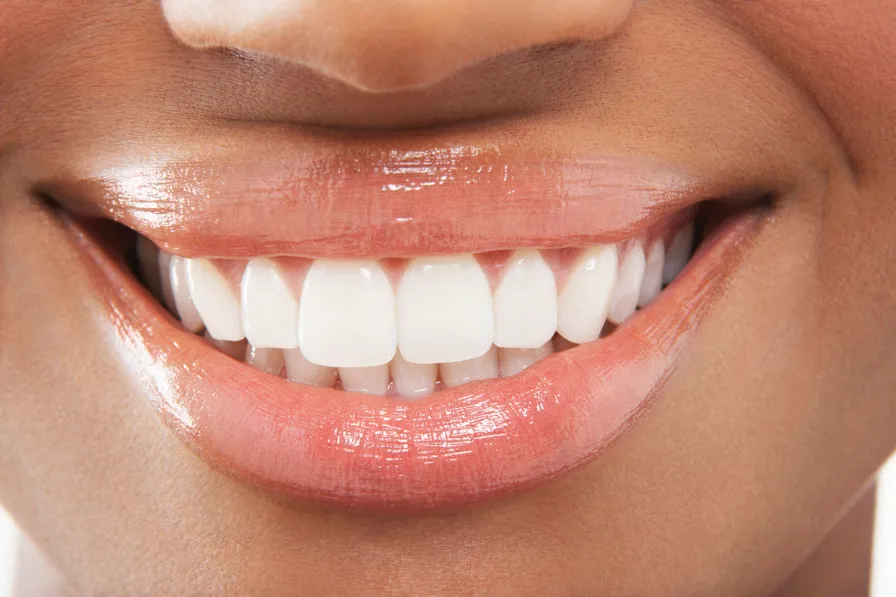
Teeth are hard, bonelike structures in the mouths of most vertebrates that are used for biting, chewing, and breaking down food. In humans, teeth are essential for digestion, as they help to break down food into smaller particles that can be easily swallowed and digested by the stomach and intestines.
There are several different types of teeth in the human mouth, each with its own unique shape and function.
The types of teeth include:
- Incisors: These are the eight front teeth, four upper and four lower, that are used for biting and cutting food.
- Canines: Then we have the four pointed teeth, two upper and two lower, that are used for tearing and piercing food.
- Premolars: These are the four teeth, two upper and two lower, that are used for crushing and grinding food.
- Molars: We have the six teeth, three upper and three lower, that are used for further crushing and grinding food.
- Wisdom teeth: These are the four teeth, two upper and two lower, that are located at the back of the mouth and are used for breaking down food.
Teeth are made up of several layers, including the enamel, dentin, and pulp. The enamel is the hard, outer layer of the tooth that protects it from decay and damage. The dentin is the layer beneath the enamel, which is slightly softer and more porous. The pulp is the innermost layer of the tooth, which contains nerves, blood vessels, and connective tissue.
Teeth are attached to the jawbone by roots, which are covered in a material called cementum. The roots are embedded in the jawbone, and the teeth are able to move slightly in their sockets due to the presence of ligaments.
- Features:
Anatomy of a Tooth:
Imagine a tooth as a tiny iceberg. The visible part above the gum line is the crown, made of incredibly hard enamel, the strongest substance in the human body. This enamel shield protects the inner layers from wear and tear. Beneath the gum lies the root, anchoring the tooth firmly in the jawbone. Dentin, a slightly softer bone-like material, forms the bulk of the tooth, surrounding the sensitive pulp at its core. This pulp houses nerves and blood vessels, sending pain signals when something's amiss.
Functions of Teeth:
Teeth wear multiple hats, not just aesthetic ones. Here are some of their key roles:
- Eating: The most obvious function! Teeth bite, tear, chew, and grind food into smaller pieces, making it easier to swallow and digest. Different tooth shapes serve specific purposes: incisors for biting, canines for tearing, premolars for grinding, and molars for chewing.
- Speech: Teeth help shape sounds and form words, giving us the ability to speak clearly and express ourselves.
- Facial Structure: Teeth support the lips and cheeks, contributing to our facial structure and appearance.
- Overall Health: Good oral hygiene and healthy teeth are linked to overall health, reducing the risk of heart disease, stroke, and other chronic conditions.
Non-Dental Teeth
"Teeth" used outside of a dental context can have various meanings, depending on the situation. Here are some possible interpretations:
1. Figurative Meaning:
- Tooth and nail: This idiom means with great effort and determination, like gripping something with both teeth and nails for extra strength.
- Cut your teeth on: This refers to gaining experience or expertise in something through initial challenges and difficulties.
- Long in the tooth: This describes someone who is old or experienced, suggesting they've seen many things and "cut their teeth" on various life experiences.
- Sweet tooth: This describes someone who enjoys sweet foods.
2. Mechanical Elements:
- Saw teeth: The pointed ridges on a saw blade that cut through wood or other materials.
- Gears/cogwheels: The interlocking teeth on gears that allow them to transfer motion.
- Zipper teeth: The interlocking parts of a zipper that hold it closed.
3. Tools and Utensils:
- Hair comb teeth: The thin, pointed spikes on a comb that detangle and style hair.
- Fork tines: The pointed prongs on a fork used for spearing food.
- Rake teeth: The curved metal bars on a rake that gather leaves and debris.
4. Natural Formations:
- Mountain teeth: Sharp, jagged peaks on a mountain range.
- Rock teeth: Protruding, pointed rock formations.
- Shark teeth: The triangular, serrated teeth of sharks.
5. Abstract concepts:
- Ideas with teeth: Strong, compelling, and potentially powerful ideas that can have significant impact.
- A song with teeth: A powerful and emotionally charged song that evokes strong feelings.
- A problem with teeth: A difficult and challenging problem that requires effort and persistence to solve.
